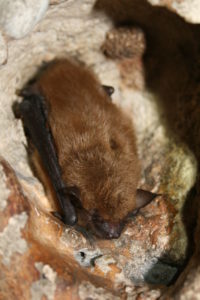Bat Week
go.ncsu.edu/readext?631286
en Español / em Português
El inglés es el idioma de control de esta página. En la medida en que haya algún conflicto entre la traducción al inglés y la traducción, el inglés prevalece.
Al hacer clic en el enlace de traducción se activa un servicio de traducción gratuito para convertir la página al español. Al igual que con cualquier traducción por Internet, la conversión no es sensible al contexto y puede que no traduzca el texto en su significado original. NC State Extension no garantiza la exactitud del texto traducido. Por favor, tenga en cuenta que algunas aplicaciones y/o servicios pueden no funcionar como se espera cuando se traducen.
Português
Inglês é o idioma de controle desta página. Na medida que haja algum conflito entre o texto original em Inglês e a tradução, o Inglês prevalece.
Ao clicar no link de tradução, um serviço gratuito de tradução será ativado para converter a página para o Português. Como em qualquer tradução pela internet, a conversão não é sensivel ao contexto e pode não ocorrer a tradução para o significado orginal. O serviço de Extensão da Carolina do Norte (NC State Extension) não garante a exatidão do texto traduzido. Por favor, observe que algumas funções ou serviços podem não funcionar como esperado após a tradução.
English
English is the controlling language of this page. To the extent there is any conflict between the English text and the translation, English controls.
Clicking on the translation link activates a free translation service to convert the page to Spanish. As with any Internet translation, the conversion is not context-sensitive and may not translate the text to its original meaning. NC State Extension does not guarantee the accuracy of the translated text. Please note that some applications and/or services may not function as expected when translated.
Collapse ▲International Bat week is being celebrated Oct 24–31. Did you know there are almost 1400 species of bats in the world? Most live in tropical areas, but they can be found almost anywhere with the exception of Antarctica. Any place where a bat stays for an extended period of time is called their roost. Bats rest, socialize, hibernate, and raise pups in their roosts. Bats will use plants to roost, but also will use caves, crevices in the rock, structures made by other animals, old bird nests and trees cavities caused by damage or disease. They always choose sites that are close to food and water sources.
I actually have bats roosting in the louver of the attic vent about 30’ up on the side of my house. There is screening to keep them out of the attic, so they are just under the louvers. I enjoy having them as they eat lots of insects, including mosquitos. I like to sit in my garden at dusk and watch them silently glide and dart about chasing their nightly meal.
Bats are facing many life threating issues such as deforestation, urban sprawl, and commercial development all contributing to the loss of habitat. They are also being affected by population loss from disease. They often are negatively portrayed in movies and the media and misinformation and lack of knowledge lead to people not understanding the good they do.
Bats eat thousands of insects each night and when they drink nectar from flowers they help in pollination by carrying pollen to flowers as they visit. In tropical areas fruit bats can consume up to four times their body weight each night in fruit, they are key to spreading the seed of tropical fruits through their droppings.
You can add plants to your landscape that attract moths and other insects that are some of the bat’s favorite foods and will bring the bats to your garden. Here is a shortlist you might consider adding:
Bergamot, prairie sundrops, penstemon, goldenrod, coneflower, mountain mint, aster, joepye weed, and chokecherry.
This information was gathered from the International Bat Week website.





